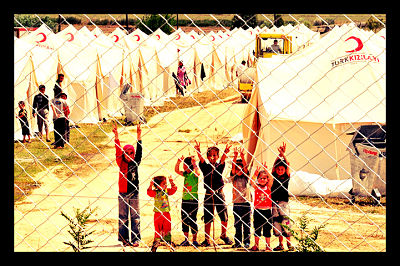7 Facts about Syrian Refugees

Every day, thousands of men, women and children cross Syria’s border in hopes of escaping their violence-stricken country, and building a brighter future. However, camps and neighboring countries are running out of places to relocate all the refugees, creating a new problem known as the Syrian Refugee Crisis. Because there are not enough accommodations or supplies for all the refugees from Syria, the places that these people are fleeing to have become similar to the devastation and poverty that they left behind.
- There are 2 million refugees.
- Since the Civil War began in 2011, more than 2 million people have fled the country. Approximately 97 percent of these refugees are hosted by neighboring countries such as Jordan, Lebanon and Turkey, putting pressure on these nations’ economies, infrastructures and societies.
- Many refugees are not counted. The real number of refugees is significantly higher than currently known. The above number refers to the refugees who registered with the United Nations (U.N.) before leaving Syria. Many refugees have fled to countries illegally, and are therefore not counted in the “official total.”
- Half of these refugees are children. As refugee camps continue to overflow, there are now over 1 million child refugees. Children make up more than half the refugees, according to the U.N. This number is more than the combined under-18 population of Los Angeles and Boston. Many of these children have no access to clean water, vaccinations or education, and constantly are constrained by the crisis in their country.
- Rape and sexual abuse are prevalent. In sprawling camps and overloaded host communities, there have been many cases of domestic violence, violence against women, and rape. Because of the conservative nature of the Syrian culture, many of these women do not report or even speak about these crimes.
- Most refugees don’t live in camps. Jordan’s Zaatari camp is now home to more than 100,000 refugees from Syria, far more than the camp is meant to hold. 70 percent of the refugees in Jordan are living in urban communities. In countries like Lebanon, there are no camps in place, so families are scattered among 1,200 different locations, such as abandoned shopping centers and stores.
- Many refugees have to pay rent. Most refugees living in urban areas are forced to pay rent to landlords. Since many of them lack a source of income, they are faced between a choice of homelessness or overwhelming debt. Because there are so many refugees in some countries like Lebanon, there are no available jobs and families are getting evicted.
- Refugee camps are like prisons. When families enter refugee camps, they are registered and confined to a gated space that they are not permitted to exit or re-enter whenever they please. Armed police officers, who are in control of the daily routine, guard the camp. There are no work possibilities or any productive pastimes. Many refugees cannot bear the conditions and instead have decided to return to Syria and face the dangers that occur there.
– Sonia Aviv
Sources: UNICEF, CTV News, The Guardian, Oxfam International, National Geographic
Photo: The Guardian
